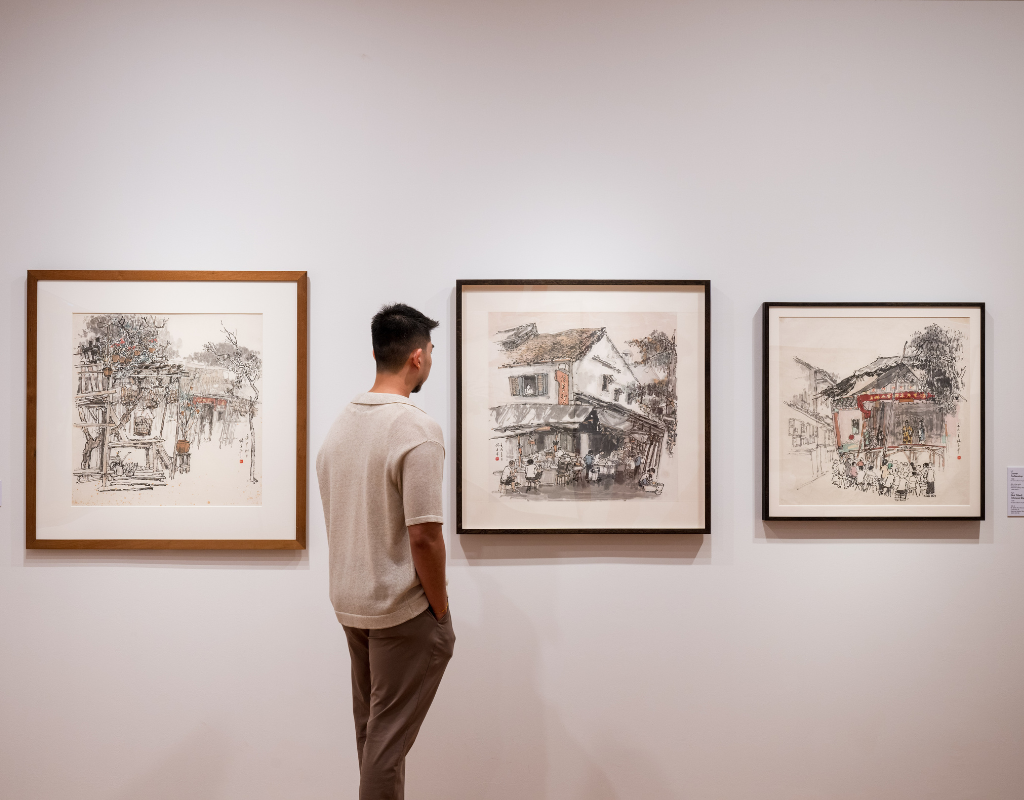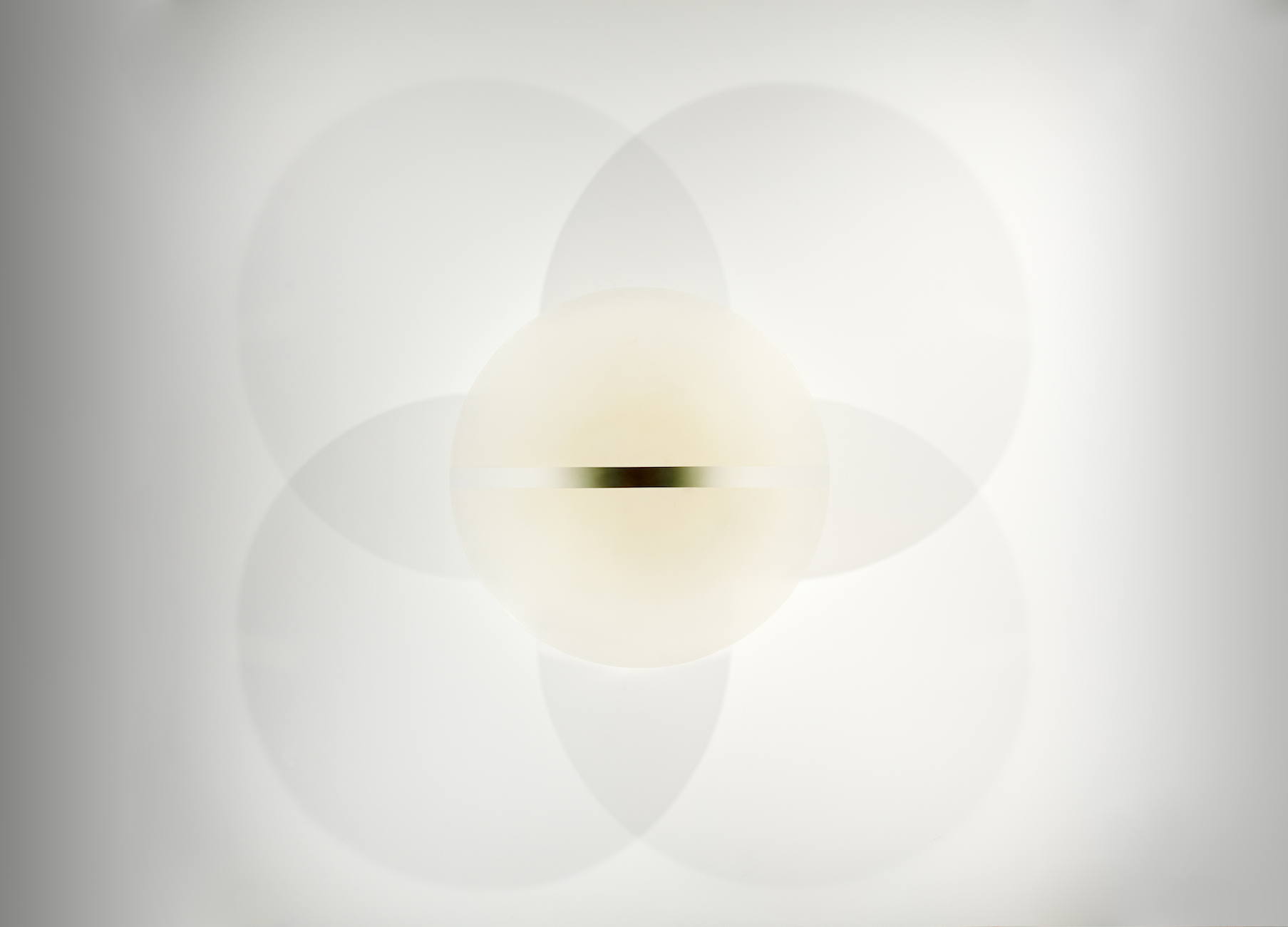Untitled
This glowing object is one of Robert Irwin’s “disc paintings” that blur the line between painting and sculpture. Irwin has constructed the work so that it appears to be effortlessly floating in the air, creating a beautiful illusion. If you’re trying to figure out where the disc ends and the background wall begins, you’re probably not alone! White paint has been sprayed onto the disc so that the paint is most concentrated in the centre, and sheers out towards the edges. This makes its boundaries less visible. It’s easier to spot this gradation if you look at the grey band that runs across the disc, because you can see how its dark centre yields to translucency at either end. Spotlights gently shine on the disc, lighting it so that its edges dissolve against the white wall. All of this heightens the impression that the disc is hovering in space.
The intricate interactions between light, shadow, object and surroundings draw our attention to the operations of visual perception. It’s difficult to tell what’s real in this indeterminate work where our line of vision keeps shifting. In order to explore this effect, Irwin started his disc series in 1965, moving away from his gestural Abstract Expressionist paintings. He left the angular canvas for the form of the circle, looking to erase the edges of his works.
Irwin became a leading figure in the Light and Space movement, which was concerned with manipulating light and space to shift perception, and in so doing, transform our consciousness.










